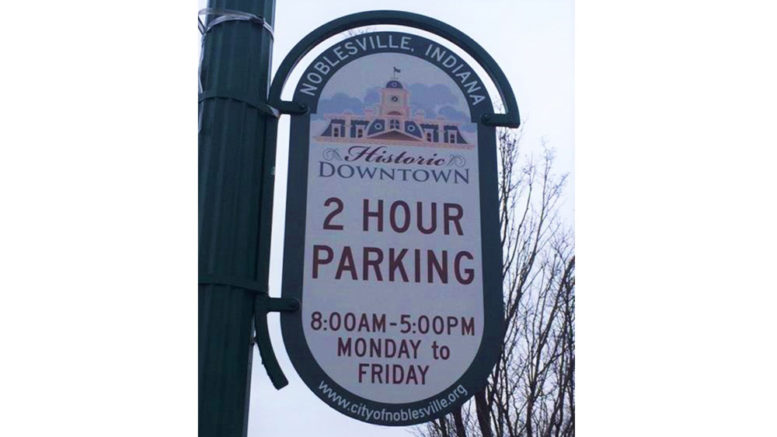Parking in downtown Noblesville has been the focus of numerous studies conducted by city officials over the past several years, and until now, not much information has been made public.
Noblesville began taking a serious look at downtown parking in 2015 when Mayor John Ditslear appointed a Parking Task Force. The Task Force is chaired by Bob Dubois, President of the Noblesville Chamber of Commerce.
Dubois’s group, a panel of residents and downtown merchants, was challenged with determining if a parking problem exits, and if so, recommendations to correct the problem.
One of the first actions taken by the Task Force was to survey residents and downtown business owners. The survey primarily addressed the two-hour free parking limit, overall parking capacity, wayfinding parking signage and a downtown parking garage.
The Task Force’s survey focused on an area identified as Wayne Street south to Division Street and 16th Street west to White River.
Of those responding to the survey, 80 percent (356) did not live in the focus area. Fifty-eight of those responses came from people who do not live in Noblesville.
The study sought to answer the decades-long question of whether Noblesville truly has a parking problem or not. “Regardless of the answer, the city’s administration believes that parking within the downtown area can and should be improved for us to achieve the Mayor’s vision of more residential and commercial development that complements and adds to the vibrancy of our historic square,” stated Noblesville Deputy Mayor Steve Cooke.
As a part of the Task Force’s work in 2015, Dubois submitted a report to Ditslear that recommended four short term solutions:
1.) Revise the Parking Ordinance 72 to increase the time restriction limit of all current two-hour parking within the parking study area (the White River to the west, Wayne Street to the north, Division Street to the south and 16th Street to the east) to three hours.
2.) Revise Ordinance subsection 72.85-72.86 to allow non-residential parking permits purchased by businesses to be transferrable for a one-time processing fee of $20.
3.) Revise Parking Ordinance 72.90 to reduce the annual fee for permits in the underutilized Lot 6 on South 8th Street to $150 from the current fee of $300.
4.) Improve Wayfinding and Parking Identification – where possible utilize the universally identified capital block letter ‘P’ in the universal blue color – update street pole banners to reflect this method of identification. Identify additional methods and opportunities to inform the public as to the locations of public parking.
Noblesville acted on three of the four recommendations. The city did not revise the two-hour free parking. Cooke commented about revising the parking limit, “We simply needed more concrete data to work from.”
In 2016 and into 2017, the Task Force began the next phase which included reviewing enhanced use of meter technology and their locations, short term parking spaces and opportunities for adding surface parking capacity, best practices in shared parking management, County government expansion impacts and a city-county parking garage.
Noblesville confirmed discussions with county officials regarding the construction of a city-county parking garage; however, Hamilton County Commissioner Steve Dillinger doesn’t feel Noblesville has a parking problem. “I can drive around the courthouse square anytime during the day and find open spots.” Dillinger followed his statement with, “Whatever problems Noblesville has, county government is at the root of all evil. Surveys I’ve seen suggest that 70 to 80 percent of people coming to downtown Noblesville do so for government business.”
Cooke said, “The next step is for the city and Task Force to come together again in 2018, formalize our recommendations based on the study and bring them to the public for consideration. The parking study provided relevant data to inform the Task Force and guide the city’s action items and next steps.
Graphics provided

